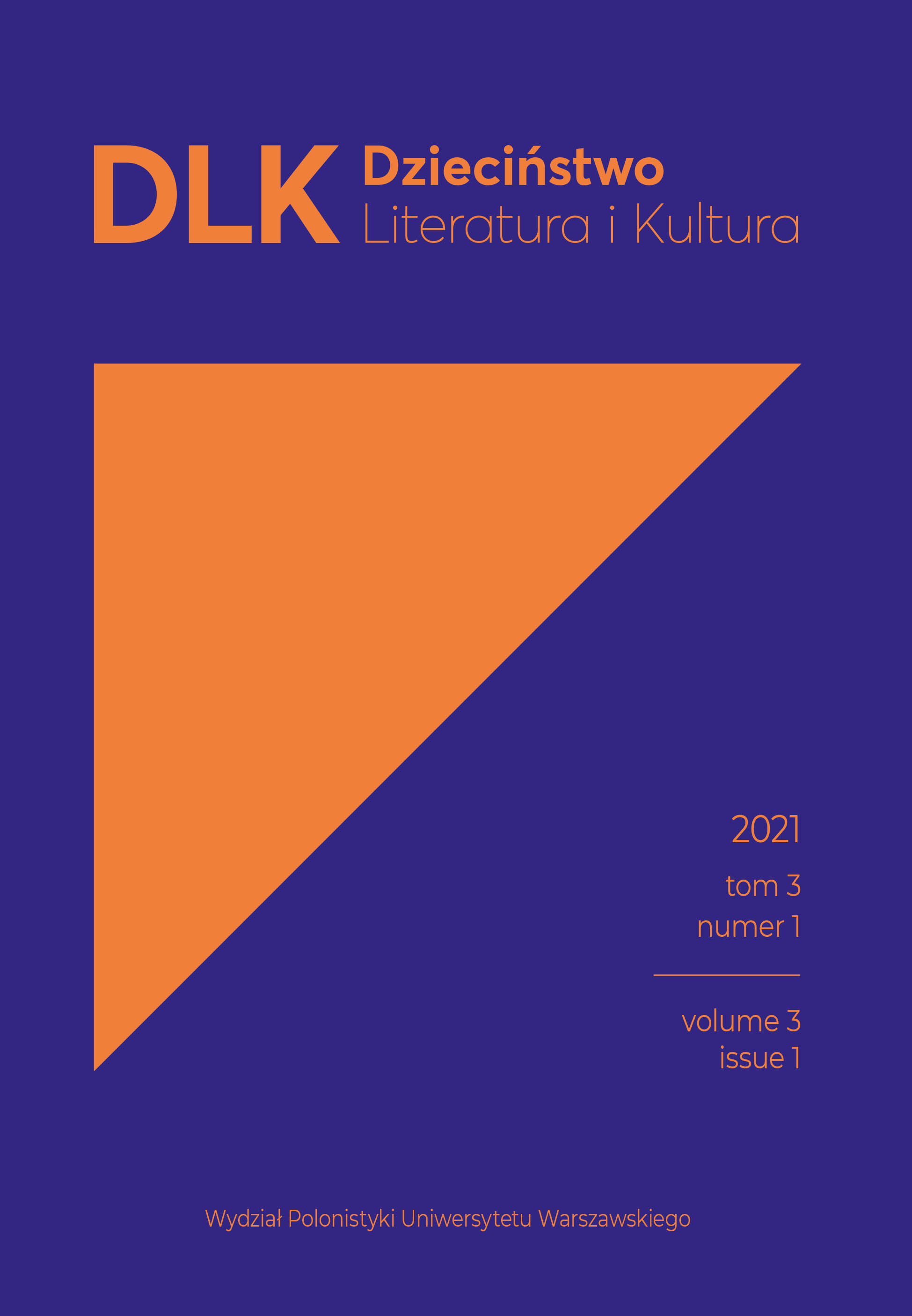Is the Film as Empowering as the Book? Studying Empowerment in A Monster Calls
Abstract
The aim of the paper is to discuss A Monster Calls (2016) by J. A. Bayona, a film adaptation of Patrick Ness’s novel (2011) of the same title, based on an original idea by Siobhan Dowd, from the empowerment theory perspective. The author of the article indicates that there are some significant changes between the book and the motion picture, especially when it comes to the ways of empowering the protagonist and the works’ potential young audience. The results of this comparative study show that the film is more affectively empowering than the novel. This is mainly because in the book, Ness skillfully uses verbal narration (accompanied by Jim Kay’s illustrations), while in the film, Bayona takes advantage of the possibilities offered by the audiovisual medium, therefore providing the audience with artistic and psychological empowerments.
Keywords
A Monster Calls; adaptation; children’s and young adult film; children’s and young adult literature; empowerment; J. A. Bayona; Patrick Ness
References
Atienza, B., Horwits, M., King, J. (Producers), & Bayona, J. A. (Director). (2016). A monster calls [Motion picture]. Spain, United Kingdom, & United States: Universal Pictures & Entertainment One Films.
Bloom, B. S. (Ed.). (1956). Taxonomy of educational objectives. Book 1: Cognitive domain. New York, NY: David McKay.
Buckley, C. (2014). Gothic and the child reader, 1850–present. In G. Byron & D. Townshend (Eds.), The Gothic world (pp. 254–263). London & New York, NY: Routledge.
Day, G. (2012). Good grief: Bereavement literature for young adults and A Monster Calls. Medical Humanities, 38(2), 115–119. https://doi.org/10.1136/medhum-2012-010260.
Facione, P. A. (2015). Critical thinking: What it is and why it counts. Insight Assessment. Retrieved from https://www.insightassessment.com/About-Us/Measured-Reasons/pdf-file/Critical-Thinking-What-It-Is-and-Why-It-Counts-PDF/(language)/eng-US. (Original work published 1992).
Farnia, F. (2017). A comparative study of the model of empowerment in six selected Iranian and English young adult novels. Unpublished PhD thesis, The International Division, Shiraz University, Shiraz, Iran.
Farnia, F., & Pourgiv, F. (2017). Empowerment in A Monster Calls by Patrick Ness. LiBRI, 6(2), 41–49.
Greene, E., & Del Negro, J. M. (2010). Storytelling: Art and technique (4th ed.). Santa Barbara, CA: Libraries Unlimited.
Jones, N. (2012, June 14). A Monster Calls: Patrick Ness and Jim Kay talk about their Carnegie and Greenaway wins. The Telegraph. Retrieved from https://www.telegraph.co.uk/culture/books/9331493/A-Monster-Calls-Patrick-Ness-and-Jim-Kaytalk-about-their-Carnegie-and-Greenaway-wins.html.
Khosronejad, M. (2004). M's ūmīyat Va Tajrubih: Darāmadī Bar Falsafiy Adabīyat-i Kūdak. Tehran: Markaz Publication.
Klammer, S. (n.d.). 100 art therapy exercises – the 2019 updated list. Expressive Art Inspirations. Retrieved from https://intuitivecreativity.typepad.com/expressiveartinspirations/100-art-therapy-exercises.html.
López Díez, J. (2018). J. A. Bayona’s ecstatic truth. International Journal of Film and Media Arts, 3(1), 40–55.
McCort, J. R. (2016). Introduction: Why horror? (Or, the importance of being frightened). In J. R. McCort (Ed.), Reading in the dark: Horror in children’s literature and culture (pp. 3–36). Jackson, MS: University Press of Mississippi.
McCullum, R. (2018). Screen adaptations and the politics of childhood: Transforming children’s literature into film. London: Palgrave MacMillan.
Moradpour, N. (2016). Shigardhā-Yi Tamarkuzzudāyy Dar Qis s ihā-I Īrānī Bi Kūshishi. Injavī Yi Shīrāzī. Iranian Children’s Literature Studies 6(2), 139–164.
Ness, P. (2011). A monster calls: Inspired by an idea from Siobhan Dowd. New York, NY: Candlewick.
Nikolajeva, M. (2010). Power, voice and subjectivity in literature for young readers. New York, NY & London: Routledge.
Sadan, E. 2004. Empowerment and community planning (R. Flantz, trans.). Retrieved from http://www.mpow.org/elisheva_sadan_empowerment.pdf. (Original work published 1997).
Sasada, H. (2013). The portrayal of monsters in illustrated children’s books: Catharsis in A Monster Calls. Bulletin of Seisen University, 61, 67–79.
Sun, K. (2018). Real dragons: Monster symbolism in Maurice Sendak’s Outside Over There, Neil Gaiman’s Coraline, and Patrick Ness’ A Monster Calls. The Looking Glass, 21(1), 10–14.
Taylor, M. A. (2010). The monster chronicles: The role of children’s stories featuring monsters in managing childhood fears and promoting empowerment. Unpublished master’s thesis, Faculty of Creative Industries, Queensland University of Technology, Brisbane, Australia. Retrieved from https://eprints.qut.edu.au/37305/1/Michelle_Taylor_Thesis.pdf.
Shiraz University Iran, Islamic Republic of
https://orcid.org/0000-0002-4607-6567
Fatemeh Farnia – PhD, is a member of Shiraz University Centre for Children’s Literature Studies (Iran). Her research interests include empowerment in children’s and young adult literature, especially in picturebooks and YA novels, and theory of children’s literature. Contact: ffarnia@hotmail.com.

This work is licensed under a Creative Commons Attribution 4.0 International License.
Open Access Policy
All articles presented on the pages of ”Dzieciństwo. Literatura i Kultura” are published in open access under a Creative Commons license - Attribution 4.0 International (CC BY 4.0). It means that:
- they can be made available and quoted under the condition of explicit and clear indication of the author/authors of the referenced text;
- you cannot use legal or technological means that would limit others in using the text under the terms of the license.
More information: https://creativecommons.org/licenses/by/4.0/





